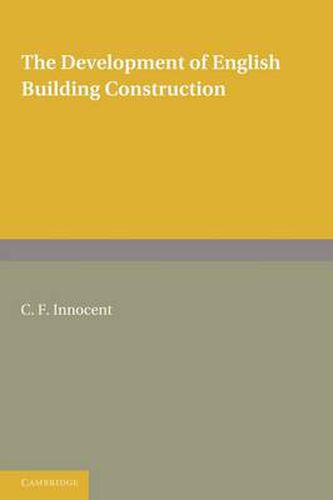Readings Newsletter
Become a Readings Member to make your shopping experience even easier.
Sign in or sign up for free!
You’re not far away from qualifying for FREE standard shipping within Australia
You’ve qualified for FREE standard shipping within Australia
The cart is loading…






The Development of English Building Construction was originally published in 1916. Its author, C. F. Innocent, had an great passion for his subject and an extensive knowledge of English architecture. He wrote this volume as a reaction to the predominant position of ecclesiastical buildings in other works on English construction history, wishing instead to give precedence to the small but significant works of architecture that constitute a true history of English construction. Innocent’s work focuses on cruck-framed homes and farm buildings, as well as stone and cob-walled dwellings. There is also a discussion of traditional roofing techniques and the cultural and linguistic significance of English architecture through the ages. Innocent’s points are well evidenced, eloquently argued and supported by a series of intriguing black and white illustrations. This book will continue to fascinate and invigorate any reader with an interest in English construction history, whether passing or professional.
$9.00 standard shipping within Australia
FREE standard shipping within Australia for orders over $100.00
Express & International shipping calculated at checkout
The Development of English Building Construction was originally published in 1916. Its author, C. F. Innocent, had an great passion for his subject and an extensive knowledge of English architecture. He wrote this volume as a reaction to the predominant position of ecclesiastical buildings in other works on English construction history, wishing instead to give precedence to the small but significant works of architecture that constitute a true history of English construction. Innocent’s work focuses on cruck-framed homes and farm buildings, as well as stone and cob-walled dwellings. There is also a discussion of traditional roofing techniques and the cultural and linguistic significance of English architecture through the ages. Innocent’s points are well evidenced, eloquently argued and supported by a series of intriguing black and white illustrations. This book will continue to fascinate and invigorate any reader with an interest in English construction history, whether passing or professional.